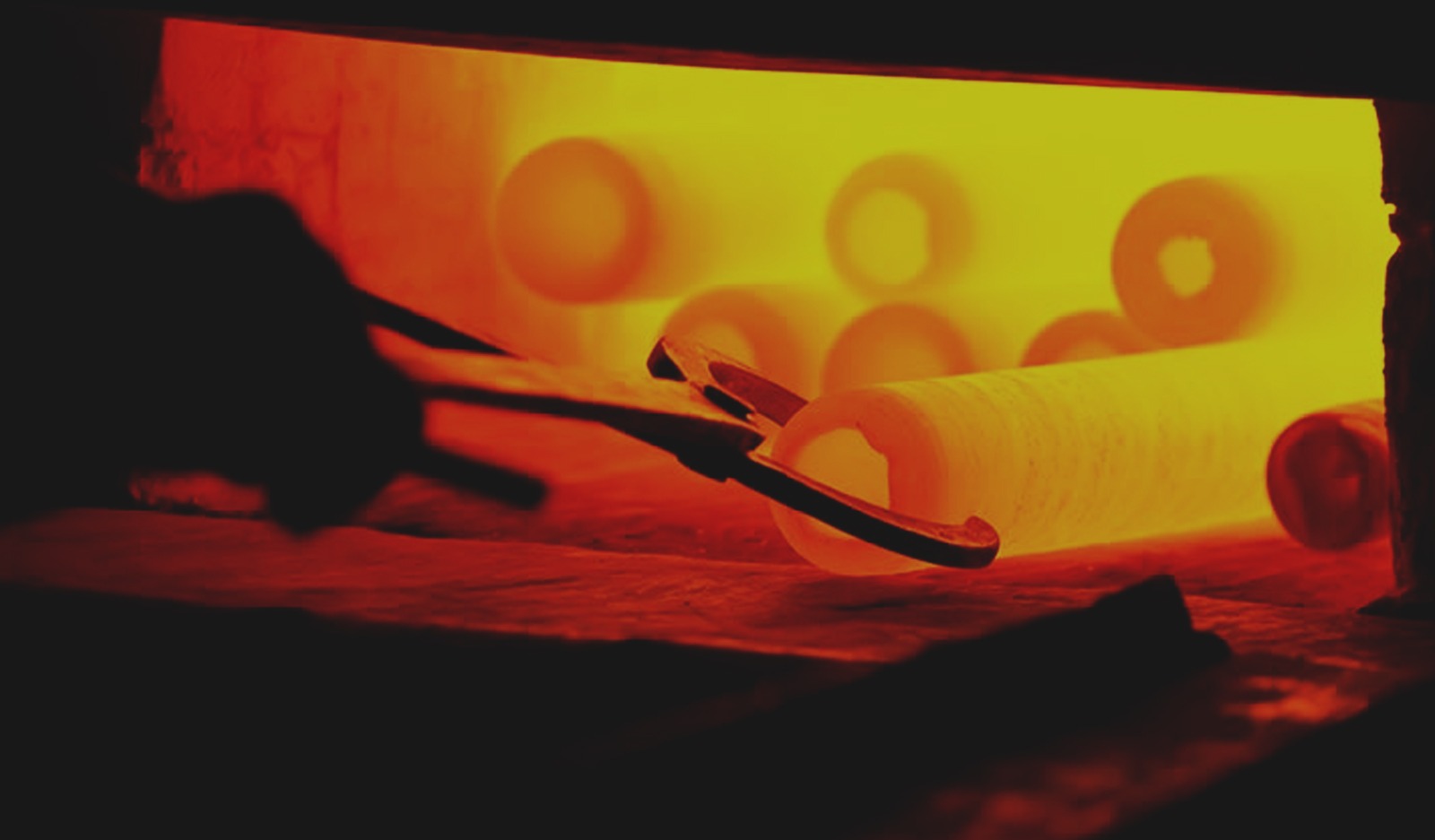Tempering is a heat treatment that can be applied to iron-based alloys such as steel and is used to alter the hardness of the metal. It’s usually employed to increase the toughness of an alloy by decreasing how hard or brittle it is. The process usually takes place after the initial hardening or quenching and is performed by heating the alloy to a temperature below the critical point and allowing it to air cool.

Hammers, wrenches and swords. What do they have in common? They’re all heat treated with a process called tempering. Read on to find out more about this crucial steel working process.
The Process
The temperature at which metals are tempered depends on the composition of the alloy and the amount of hardness that is desirable for the finished product. Low temperatures are used to temper hard tools, while high temperatures are used to temper softer metals.
The quenching phase is a rapid cooling process that puts metal in its hardest state. In this state, however, metal is very brittle and can easily break or fracture. Alloys that are fabricated for prolonged exposure to impacts require tempering to improve their toughness.
Tempering is the process of reaching a ‘lower critical temperature, also known as lower transformation temperature. This is the temperature at which the crystalline state of alloys, called ferrite or cementite, begins combining to form a single-phase solid solution called austenite. Heating above this temperature is avoided as it can unravel the hardened microstructure formed during quenching known as martensite.
Differential tempering
Differential tempering is a method that applies different levels of temper to different areas of steel. The process is often used in blade making, providing a hard edge, while softening the spine or centre of the blade. In this method, heat is applied only to a portion of the blade, meanwhile, the blade is carefully watched as tempering colours move towards the edge.
History
The oldest example of tempering is a martensite pickaxe, found in Galilee that dates from around 1200 to 1100BC. The process was common throughout the ancient world and was a similar to that used today, however, in historic times, is was seen as a two-part process with rapid cooling, what we would call today quenching. Everything from water, urine to even blood and mercury were used to quench and therefore harden the metal.
Tempering followed, which remove some of this hardness. This two-step process is still used today, however, tempering is only defined as the softening of the metal, and usually, only water is used to quench. Early examples of tempering have been found everywhere from Asia, to Europe and Africa.
Tempering Colours
Steel that is freshly polished can form an iron oxide layer on its surface that can change colour with temperature. The layer thickens as metal is heated causing a phenomenon called thin-film interference, with different colours appearing at different temperatures. These colours are used to indicate to metal workers the level of tempering applied to the steel. These include:
• Faint-yellow is achieved at a temperature of 176 °C (349 °F) and is used for engravers, razors, scrapers.
• Light-straw is achieved at 205 °C and is used for rock drills, and metal-cutting saws.
• Dark-straw is achieved at 226 °C and is used for tools such as planer blades.
• Brown is achieved at 260 °C and is used for drill bits, hammers and cold chisels.
• Purple is achieved at 282 °C and is used for surgical tools, and stone carving tools
• Dark blue is achieved at 310 °C and is commonly used for screwdrivers and wrenches.
• Light blue is achieved at 337 °C and is useful for springs and wood-cutting saws.
• Grey-blue is achieved at 371 °C or higher and is found in structural steel.
If you would like to learn more about tempered steel or if you need quality steel that is fabricated to suit your unique needs, contact Steel Fabrication Services today.
Our team of expert structural steel fabricators have the experience and knowledge to answer any of your questions and will ensure that you find the best solution to suit your needs. To contact us today, simply call, fax or email for information or a steel fabrication quote, or drop by our Brookvale location.